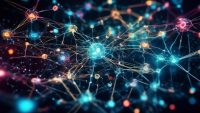As technology continues to evolve, its impact on various industries, including education, cannot be ignored. Web3 technology has emerged as a potential game-changer in the field of education, offering advanced features and capabilities that have the potential to transform the way we teach and learn.
From personalized learning administration to remote learning possibilities, Web3 brings a range of benefits to the table. However, like any new technology, it also presents challenges that need to be addressed.
In this article, we will explore the potential benefits, drawbacks, and implications of Web3 in education, leaving you with a glimpse of the exciting possibilities that lie ahead.
Key Takeaways
- Web3 technology in education offers reduced expenditure by providing affordable access to a wealth of information.
- Intelligent search capabilities save time for learners by allowing them to explore customized and relevant information.
- Teachers can create more engaging and interactive assignments using various resources, fostering students' creativity.
- Web3 technology enables access to global education, allowing students to evaluate universities and colleges worldwide and explore courses or certifications of interest.
Benefits of Web3 in Education
Web3 technology offers numerous benefits for education, revolutionizing the way students access information and engage with learning materials. One of the key advantages is improved collaboration among students. Web3 allows for seamless communication and collaboration, enabling students to work together on projects, share ideas, and provide feedback in real-time. This fosters a sense of community and enhances critical thinking skills as students learn to consider different perspectives and develop well-rounded solutions.
Additionally, Web3 technology encourages enhanced critical thinking. Through access to a wide range of resources and interactive learning tools, students are empowered to think critically, analyze information, and make informed decisions. This promotes a deeper understanding of the subject matter and prepares students for the challenges of the modern world.
Drawbacks of Web3 in Education
Despite the numerous benefits of Web3 technology in education, there are certain drawbacks that need to be considered.
One of these drawbacks is the security concerns associated with using web applications. Students need to be aware of potential risks to their personal data and the confidentiality of their information.
Additionally, accessibility challenges arise with the adoption of Web3 technology. The cost of advanced machines required for Web3 may be expensive and inaccessible to some students, limiting their ability to fully utilize the technology. Moreover, students in rural areas may face limited connectivity and lack access to intelligent devices, further hindering their use of Web3. This digital divide creates inequality in access, leaving students in rural areas at a disadvantage.
These drawbacks highlight the need for careful consideration and implementation of Web3 technology in education.
Web3 Technology Enabling Remote Learning
As education embraces the possibilities of Web3 technology, one significant outcome is the enablement of remote learning, providing students with the flexibility and independence to continue their education regardless of their physical location. This shift towards virtual classrooms and online learning platforms has revolutionized the way students collaborate and engage with their studies.
- Virtual classrooms: Web3 technology allows for the creation of virtual classrooms where students can attend lectures, participate in discussions, and collaborate with their peers in real-time, regardless of their geographical location.
- Web3 and student collaboration: With Web3 technology, students can collaborate on projects and assignments using decentralized platforms, enabling them to work together seamlessly and access shared resources from anywhere in the world.
- Enhanced engagement: Web3 technology offers interactive features such as augmented reality and virtual reality, which can be integrated into remote learning experiences to enhance student engagement and create immersive learning environments.
Web3 Enhancing Information Retrieval
With the integration of Web3 technology, information retrieval in education has been greatly enhanced. Users can quickly and easily access a wide range of knowledge resources. Web3's semantic web integration and personalized search capabilities contribute to a streamlined and efficient information retrieval process. Users can benefit from a customized search experience, exploring specific and helpful information tailored to their needs.
Additionally, Web3's smart search technology adds new meaning to existing content. This enables users to interact easily with the current environment, saving time in information gathering and expanding options for learning and research. Furthermore, Web3's tools such as AI and ML streamline the process of gathering and integrating knowledge. This facilitates a seamless and enriching educational experience.
Web3 Promoting a Decentralized Education Ecosystem
Web3 technology revolutionizes the education landscape by fostering a decentralized ecosystem that empowers learners and promotes global knowledge sharing.
This decentralized approach to education has several benefits:
- Blockchain integration in educational credentials: Web3 leverages blockchain technology to securely store and verify educational credentials, ensuring transparency and eliminating the need for intermediaries.
- Web3's role in fostering global collaboration in education: With Web3, learners from different parts of the world can easily collaborate and share knowledge. This promotes cross-cultural understanding and enables the development of innovative solutions to global challenges.
- Empowering learners and promoting lifelong learning: Web3 empowers learners by giving them control over their data and compensating them for their time on the Internet. It also provides a decentralized ecosystem that offers continuous educational opportunities, supporting lifelong learning.
Impact of Web3 on Student Empowerment
The empowerment of learners in the education landscape is significantly enhanced through the transformative impact of Web3 technology. Web3 fosters student engagement by providing personalized learning experiences. With Web3, students have access to a wide range of resources and can explore customized and relevant information through intelligent search capabilities. This not only saves time in information gathering but also promotes independent learning.
Web3 also enables students to create engaging content using virtual spaces, enhancing their learning experience. Furthermore, Web3 promotes a decentralized education ecosystem, empowering learners by giving them control over their data and compensating them for their time on the Internet. Collaboration and connectivity are fostered, allowing for global knowledge sharing.
Future Implications of Web3 in Education
The integration of Web3 technology in education is set to revolutionize the learning experience, shaping a future where students have access to innovative tools and resources that enhance knowledge acquisition and promote lifelong learning.
Web3's role in educational equity:
By leveraging Web3 technology, educational institutions can bridge the gap between students in urban and rural areas, ensuring equal access to quality education. Web3's decentralized nature empowers learners, giving them control over their data and compensating them for their time on the Internet, thus promoting a more equitable learning environment.
Web3's impact on traditional classroom structures:
The traditional classroom model is being challenged by Web3 technology. With Web3, learning becomes more flexible and independent, as students can learn from anywhere and at any time. Virtual content creation and collaboration foster a more engaging and interactive learning experience, breaking away from the constraints of physical classrooms.
Adoption of Web3 technology in education will lead to a future where knowledge is accessible, inclusive, and personalized, transforming the way students learn and educators teach. It holds the potential to empower learners, bridge educational gaps, and redefine the traditional classroom structure.
Frequently Asked Questions
How Does Web3 Technology Impact Student Empowerment in Education?
Web3 technology empowers students in education through blockchain integration and decentralized learning platforms. It gives students control over their data, fosters collaboration, and encourages lifelong learning, leading to more innovative and effective educational experiences.
What Are the Potential Future Implications of Web3 in Education?
The potential future implications of Web3 in education include the widespread adoption of virtual classrooms, the utilization of blockchain technology for secure and verifiable credentials, and the transformation of teaching and learning methods through innovative technological advancements.
How Does Web3 Technology Enable Remote Learning?
Web3 technology enables remote learning by providing flexibility, independence, and continuity of education. It allows students to learn from anywhere, access knowledge independently, create virtual content, and save time in knowledge acquisition.
What Are the Drawbacks of Using Web3 Technology in Education?
Privacy concerns and accessibility issues are two major drawbacks of using Web3 technology in education. Students must be cautious about the potential risks to personal data, while those in rural areas may face limited connectivity and lack access to intelligent devices.
How Does Web3 Enhance Information Retrieval for Learners?
Enhanced accessibility and personalized learning are key benefits of Web3 technology in information retrieval for learners. It enables quick and easy access to customized and relevant information, streamlining the process of knowledge acquisition and expanding learning resources.
Conclusion
In conclusion, Web3 technology has the potential to revolutionize education. It can do this by providing affordable access to information, promoting personalized learning, and enabling remote learning. Challenges, such as suitability for beginners and information security issues, need to be addressed.
Despite these challenges, Web3 holds great promise in empowering learners. It can do this by fostering collaboration and creating a decentralized education ecosystem.
Like a bright beacon of knowledge, Web3 has the power to transform education and shape the future of learning.






